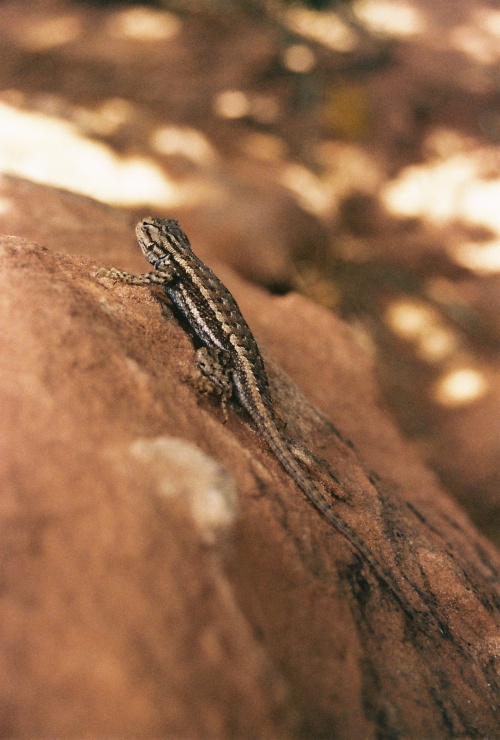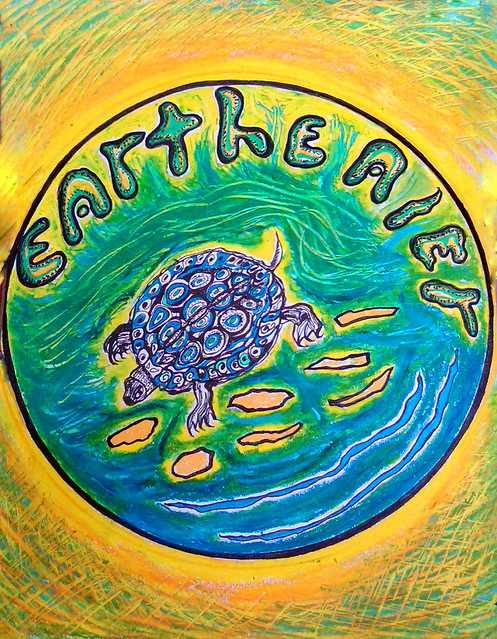
Slow Walking, Ghost Ranch, New Mexico, C-41 film, photo © 2007-2019 by QuoinMonkey. All rights reserved.
In the spring of 2019, I signed up for Natalie’s online class Writing Down the Bones: Find Your Voice, Tell Your Story –– to remember who I am; to try to get back to a practice. It is slow. Liz encouraged me to take the film cameras out again. It reminds me of my roots. Photography is a practice to me. It is like breathing.
Liz returned from a photographic retreat on the Big Island of Hawaii in March. In late April, we walked the prairies and photographed the white willows at the Minnesota Landscape Arboretum. Liz was shooting digital with the Fuji X100F and Sony A7 III. I grabbed the Minolta XD-11, the Canon Rebel EOS 2000, and a few rolls of film. A little rusty, I opened the back of the Canon Rebel to find undeveloped film inside. Whoops, light exposure! (The last time I developed found film, it turned out to be black and white Tri-X of my family from the 1990s.) I finished the rest of the roll and sent it off to be processed.
Now a photographer used to the instant gratification of an old iPhone 6s, I waited two weeks for the C-41 prints to be developed. The day they arrived, Liz and I ran out of National Camera Exchange and ripped opened the envelope in the front seat of her Subaru. There she was, Pedernal at Ghost Ranch. The way she looked over a decade ago at the four season retreat with Natalie.
Synchronicity.
I remember the group walking off to write haiku, swimming with koi in the pond, complaining about the heat. I remember falling behind and never catching up, walking alone by the cliffs and ridges, taking this photograph at Ghost Ranch. I think it’s a whiptail. Natalie would tell me I should know the names of the details around me. There was a photograph of her in the decade-old batch of C-41 prints that came back. She was walking down the road at the Mabel Dodge Luhan House, headed back to her room after teaching. She glanced back at us; there was a smile on her face.




























